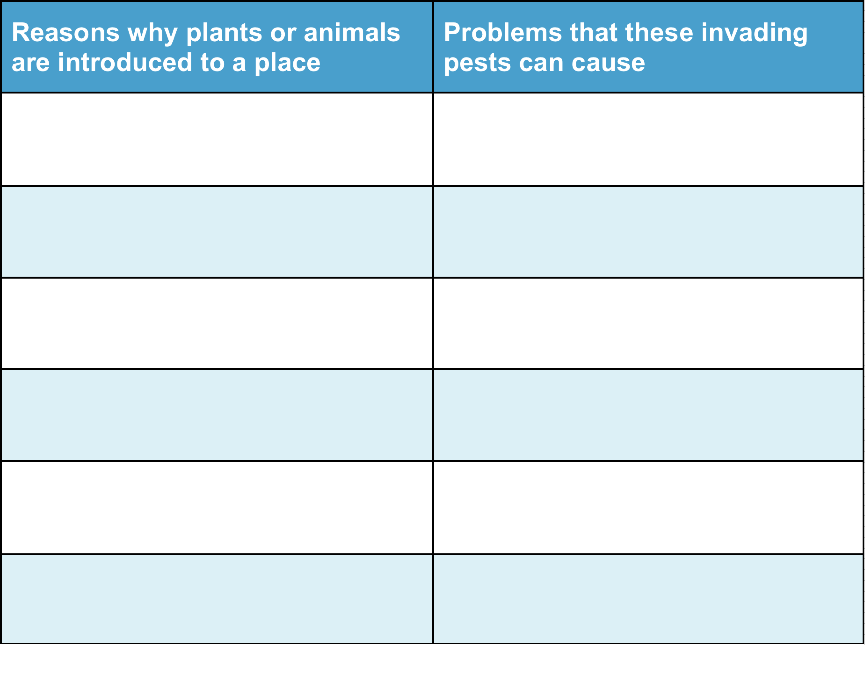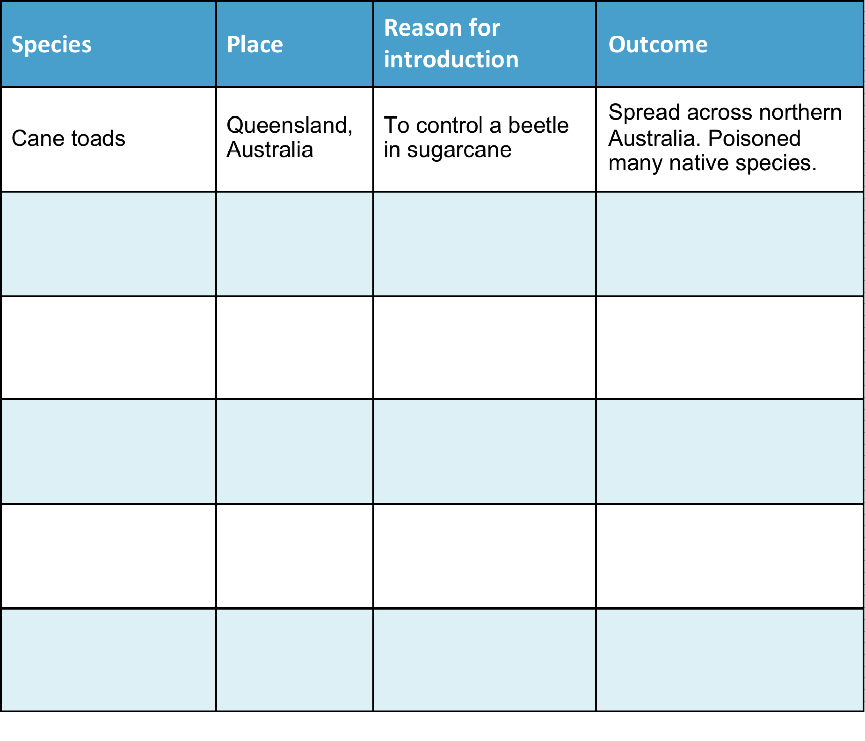Information for Teachers
Curriculum links
Australian Science Standards
BS (ACSSU43) Structural features and adaptations of living things assist their survival
SS01.3 Sustainable patterns of living rely on the interdependence of healthy social, economic and ecological systems
New Zealand Science Achievement Objectives
LW: The key structural features and functions to the life processes of plants, animals and micro-organisms
NS: Scientists’ investigations are informed by current scientific theories and aim to collect evidence that will be interpreted through processes of logical argument
Helpful websites
You may want to direct your students to websites to help with their investigations.
Students can do searches for feral+plant or animal+country or state
invasive+species+location
Pest animals and plants are sometimes feral. They were introduced as pets or garden plants by people but they have escaped and flourish in the wild.
How to search the internet
1 Keep your request short
Fewer words will give a more accurate search.
2 Choose exactly what you want
For example: Arctic Circle Climate
3 Use quotes
Double quotes around a set of words tell the search engine to consider those exact words in that exact order without any change. For example: “Arctic Circle Climate”
4 Use the plus sign (+)
If you add a plus sign (+) between words, the internet will search for all the words. For example: migrate+birds+whales+mammal
5 Use the minus sign (–) to say what you don’t want
Use a minus sign (–) to show words you do not want to appear in your results. For example: if you search for burrowing animals and do not want mammals in your search, –mammals will exclude mammals. Note that you need to put a space before the minus sign for the word to be excluded.
6 Be very clear about what you don’t want
Part 1
Ask questions and make predictions
After reading Rock Snot, Cane Toads and Other Aliens, you may have many questions about the problems caused by introducing living things into new environments.
List your questions
- Compare your list with questions that others have.
- Choose a question you would like to investigate.
- You can work alone, with a partner, or in a small group.
You may want to choose one or more of these questions to investigate
Q1. Choose an introduced species to investigate and explain the damage they can do to an environment.
Q2. What can happen to native species of plants and animals when new species of living things are introduced?
Q3. Are there problems with introduced or invasive plant or animal pests near where you live? What damage do these plants or animals cause?
Go to Part 2 Plan and investigate →Part 2
Plan and investigate
Do searches in the internet or in books or talk to people who can help to find the information you are looking for.
Your teacher may suggest suitable websites for further information.
Go to Part 3 Record and analyse data →Part 3
Record and analyse data
Find a way of recording your information that will allow you to see any patterns in the data.
Data Chart for Rock Snot, Cane Toads and Other Aliens
 Download Chart
Download Chart
Go to Part 4 Evaluate the information →
Part 4
Evaluate the information
1. Look over the information you have gathered and the patterns you have found.
What have you learned about introduced species?
What are the main reasons why animals or plants were introduced into an area?
Did the decision to introduce these plants or animals produce the expected outcome?
What damage can invasive plants do to native vegetation?
2. Search for other patterns.
How are people responsible for introduced invasive plants and animals?
What sort of things are they doing to try to fix these mistakes?
3. Makes notes about what you find.
Go to Part 5 Communicate and share ideas →Part 5
Communicate and share ideas
Look over all of the information that you have gathered in your investigation.
What are the most important ideas about invasive species?
Make a chart showing the most important ideas.
 Download Chart
Download Chart
← Return to menu
